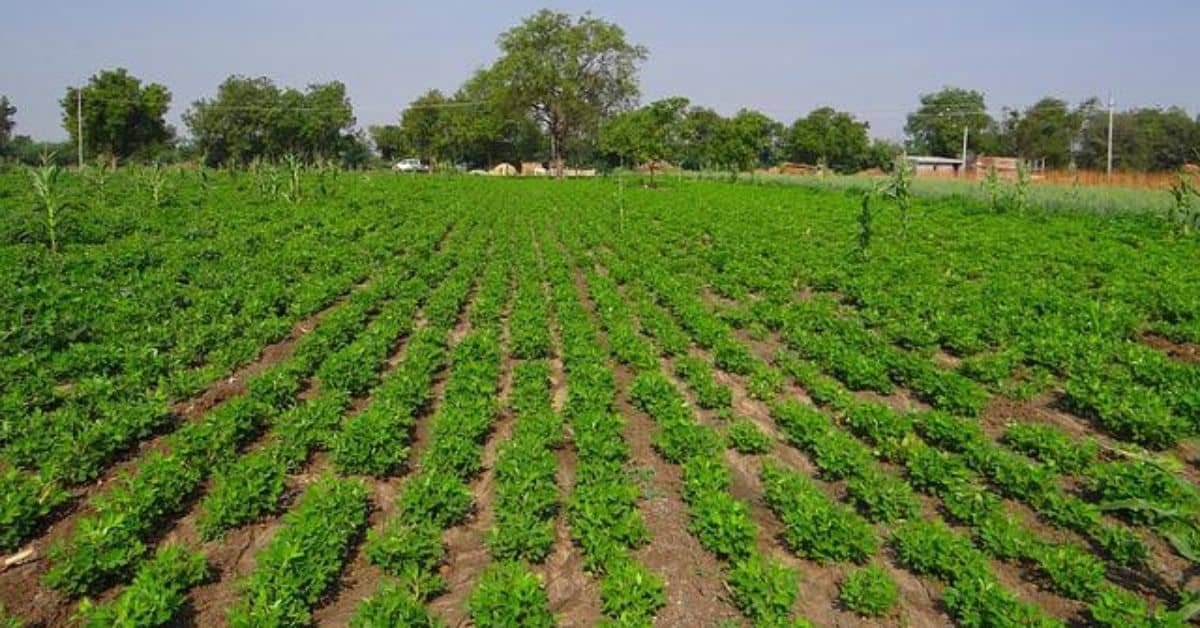How to grow groundnuts: Groundnut is an important oilseed crop. It is also one of the best edible oil crops. Although the quality of groundnut oil is superior to mustard oil, it is not popular in our country as cooking oil because of its consumption habit. It is mainly consumed as roosted nut and as a confectionary item.
- Common name: Groundnut/ Peanut/ Monkeynut.
- Scientific name: Arachis hypogaea.
- Family: Solanaceae.
- Origin: The primary center of origin is southern Bolivia and northern Argentina. The secondary center of diversity is other South American countries like Peru and Brazil.
- Variety: BARI China badam 5, BARI China badam 6, BARI China badam 7, BARI China badam 8, BARI China badam 9, Dhaka 1, DG 2, DM 1 (Tridana), Acc 12 etc.
How to Grow Groundnuts
Climate
Groundnut is essentially a tropical plant and requires a warm growing season.
- In 107-114 cm rainfall, groundnut is successfully grown.
- Groundnut tolerates heavy rainfall up to 152 cm.
- The optimum temperature for growth is 25-30 degree-celsius.
- Below 20 C retards development.
- Above 35 C adversely affects flower production.
Soil
Light, well-drained, sandy loam or sandy soil of char (River embankment) area are suitable for groundnut production. Soil should be soft and loose so that gynophores of groundnut flowers can easily penetrate the soil and go down to form nuts.
Land Preparation
Although groundnut is a deep-rooted crop, deep plowing should be avoided by looking to its underground pod formation habit. Besides, soils of the sandy area are very loose, so 3-4 plowing followed by laddering is sufficient. Irrigation and drainage system could be developed by making canals after final plowing and laddering.
Seed rate
The seed rate depends on the germination of percentage. However, 95-110 kg/ha is optimum.
Seed treatment
Pre-sowing seed treatment with Vitavax200, 23 g/ kg of seed, or Agrosan, 4 mg/ kg of seed could reduce the disease infestation.
Time of sowing
Groundnut could be cultivated in both Rabi and Kharif seasons in Bangladesh.
- In Rabi season: Mid October Mid November.
- In Kharif: July August.
Sowing method
Seeds should be planted in rows.
Spacing
1. In general (for all the varieties)
- Row to row distance is 30 cm.
- Plant to plant distance is 15 cm.
2. In the Tridana variety (DM1)
- Row to row distance is 25 cm.
- Plant to plant distance is 10 cm.
3. Seeds should be placed at a 2-3 cm depth of soil.
Fertilizer dose and application method
The groundnut plant itself fixes atmospheric nitrogen. So, the requirement of urea for this crop is very low. However, the fertilizer doses are;
- Urea 25-30 kg/ha
- TSP 150-170 kg/ha
- MoP 80-90 kg/ha
- Gypsum 160-180 kg/ha
- Zinc sulfate 45 kg/ha
- Boric acid 9-11 kg/ha
All fertilizers should be applied before final land preparation.
Intercultural operation
Weeding:
The groundnut seeds within 2 weeks after sowing and start flowering 1 month later. Normally 12 weeding should be done. During weeding, the soil is loosened, and earthing up is done by spade. The first spading is done 3 weeks after sowing and the second 3 weeks later. Care should be taken not to disturb the soil after flowers have set.
Irrigation
There is no need for irrigation in the char area’s soil, but in the high land where the soil becomes dry quickly are required 12 irrigations.
- In Rabi season, 2-3 irrigation can be done: 1st at 25-30 DAS, 2nd at 50-55 DAS, and 3rd at 75-80 DAS.
- In the kharif-1 (summer, March-June) season: 1 irrigation should be required depending on the field condition.
- In kharif-2 (summer, July-November) season: there is no need for irrigation. But Drainage may be needed to drain out excess water.
Pest Management of Groundnut
Major insects: Hairy caterpillar, Jassids, and Thrips. Control measures
- In case of hairy caterpillar insect infestation, leaves of the infested plant should be destroyed along with the eggs and larvae of insects.
- For adult insect control, Ripcord 10 EC or Nogos 100 EC should be sprayed @ 1 ml of insecticide with one liter of water.
- Diazinon 60 EC @ 2 ml per liter of water should be sprayed to control Jassids and thrips.
Harvesting of Groundnut
- Maturity symptoms: When plants mature, the leaves of the lower parts of plants become yellow. The surface of pods becomes rough and hard, veins become prominent, and the inner surface of the pod’s shell becomes blackish in color. The cover of kernels becomes brown in color. These are the ideal condition when the crop is ready for harvest.
- Maturity time: Early variety: 120-135 days, Late variety: 150-180 days.
- Method: Groundnut can be harvested with a country plow or spade.
Post-harvest Operation of Groundnut
- Threshing: The harvested crop should be kept in small heaps for 23 days for curing. After curing, the nuts are to separate from the soil, and soil adhering to the nuts should be removed.
- Drying: Pods should be dried for 8 hours after harvesting. The moisture content of pods should be 89%. Seeds should be cooled and then stored after sun drying.
- Storing: For storing groundnut, different types of containers may be used. If seeds are stored in air-tight conditions, whether in polythene bags or synthetic bags, the seeds’ quality and viability are restored for more than one year, but during the rainy season, seeds should be checked and dried and kept in the same container.
Yield of Groundnut
- 2.53 ton/ha.
